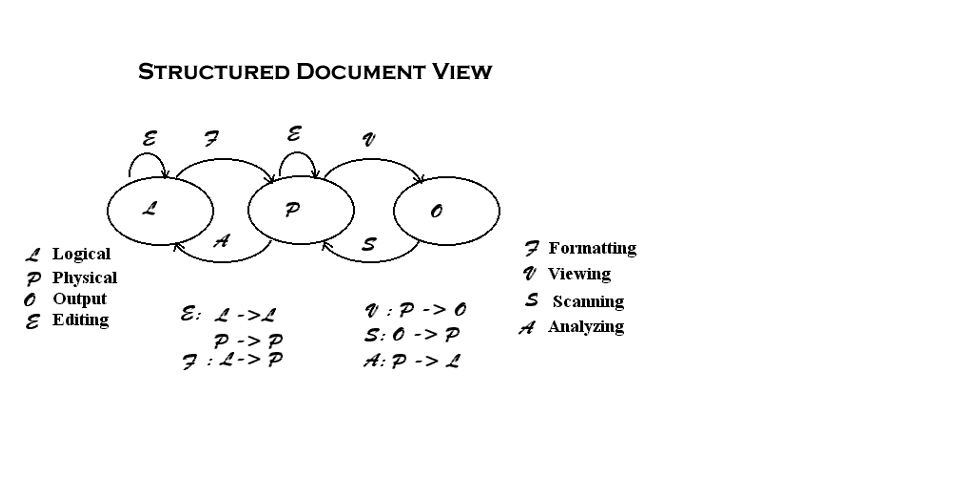What is a Structured Document?

 KAL
KAL



Logical Structure: This refers to the organization as seen by the author.
Thus, a book might consist of a preface, a table of contents, some chapter, a bibliography and an index. The chapters might contain sections, which in turn, contain paragraphs and graphics, ...
Another example is the document represented by this course. This course consists of a number of modules. Each module contains a title, some paragraphs and a homework. Paragraphs consist of sentences, some with links, ...

Physical Structure: This is often the structure as seen by the publisher.
Thus, a book might consist of a cover, and pages (which exist as galleys before they are divided into pages). The pages might be divided into paragraphs or drawings etc.
This course consists of HTML code describing pages of text, links and graphics.

Output Structure : This is the document as it is rendered.
The textbook might be printed on paper or exist on the Web, etc.
This course can be rendered on the Web or printed out on paper.
Note that one logical document can have more than one associated physical document, and that one physical document can have more than one output structure.
But, why go to all this work? Why not just use our favorite word-processor, and our favorite programs on our favorite platforms to achieve a nice electronic document?



Send questions and comments to: Karen Lemone